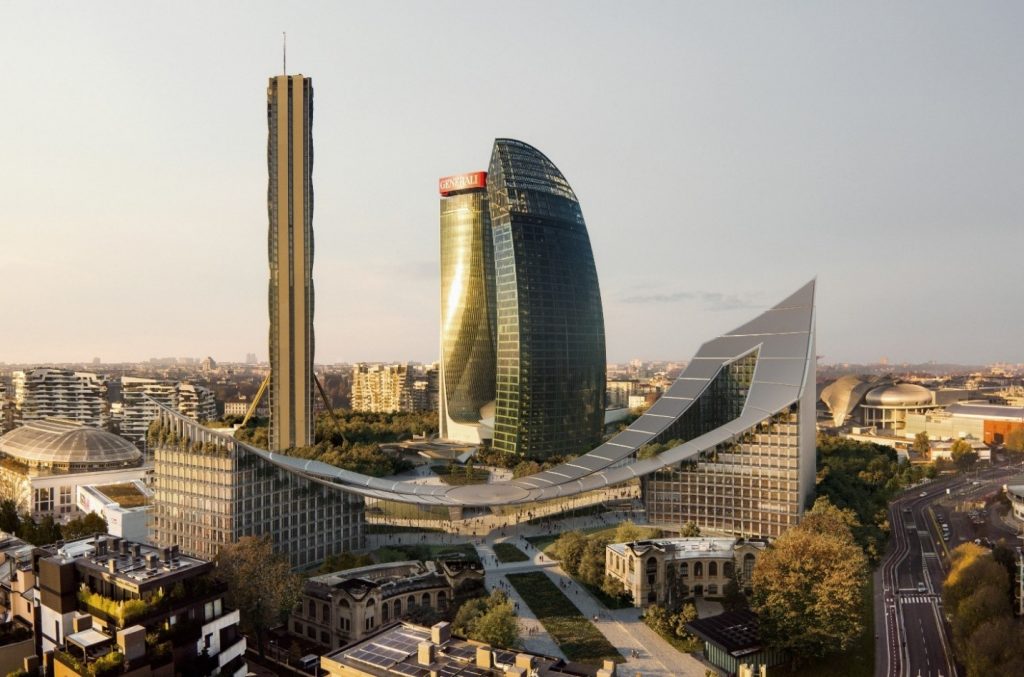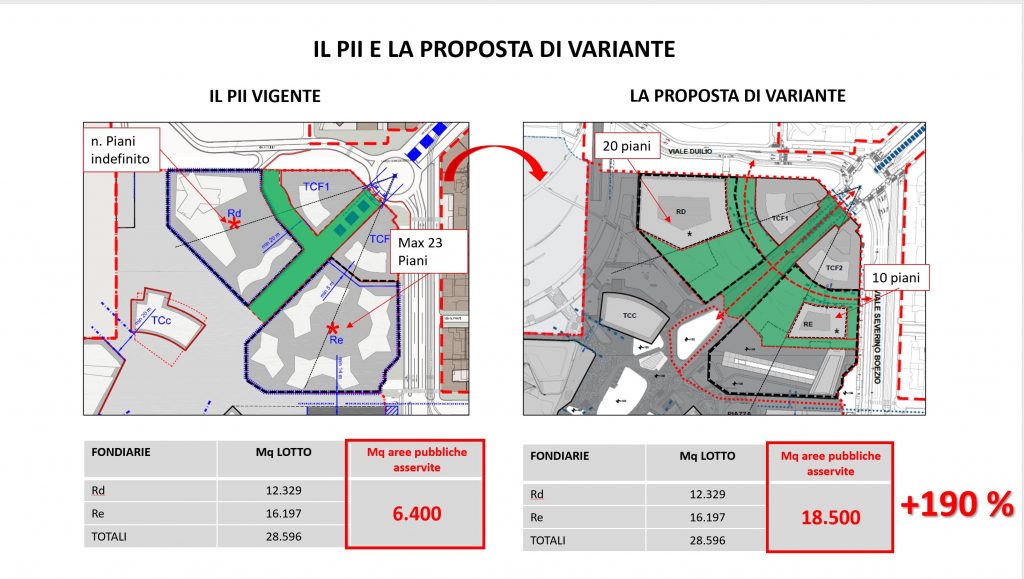AUTORE: Andrea Zerbini
TUTORS: ing. Giovanni Franchi
INTERNSHIP: –
MASTER:Master in “PROJECT AND CONTRACT MANAGEMENT IN CONSTRUCTION WORKS” a.a 2021/22
Il presente lavoro ha l’obiettivo di descrivere il processo di sviluppo del progetto denominato Citywave all’interno dell’ ambito di riqualificazione urbanistica del PII Citylife.
Si tratta di un progetto che prevede la realizzazione di due edifici destinati ad attività direzionali per una superficie complessiva di circa 60.000 mq uniti da una struttura denominata “Portico” che copre un parco pubblico di circa 20.000 mq.
L’intervento è stato oggetto di un concorso internazionale a cui hanno partecipato gli studi più importanti del panorama dell’ Architettura.
Il concorso è stato vinto dallo studio danese Bjarke Ingels Group (BIG) che ha deciso di non “competere” con le altre tre torri esistenti ma di “completare” le altre torri.
Partendo dalla fase iniziale del Project Charter si evidenziano tutti gli aspetti propedeutici alla partenza del progetto che passano dall’ analisi del contesto e individuano gli obiettivi oltreché i rischi dell’operazione.
Un progetto di queste dimensioni deve necessariamente essere esplorato prima della partenza analizzando tutti gli effetti che il mondo esterno può generare sul futuro assetto dell’area.
Il lavoro pertanto analizza tutti gli stakeholder dando ad ognuno di essi un peso specifico e una descrizione.
Si utilizza inoltre la Swot Analysis per andare ad individuare le criticità e le potenzialità del progetto e per capire se è necessario agire su temi specifici per ridurre i rischi dell’operazione.
Una volta individuato il vincitore inizia la fase di progettazione che si divide in preliminare, definitiva ed esecutiva. Questa fase viene affrontata con la modalità Agile per rispettare le tempistiche stringenti.
Altro aspetto che viene affrontato è la gestione della variante urbanistica senza la quale non sarebbe stato possibile procedere alla costruzione del fabbricato. La sua conformazione e la diversa superficie dei due edifici differisce dalle NTA del PII e pertanto occorre fare una variazione per rendere attuabile il progetto. Per questo è importante coinvolgere tutti gli attori già individuati tra gli Stakeholder.
Durante la fase di progettazione è stato necessario coordinare anche le attività di scavo e bonifica che parallelamente proseguivano per consentire al futuro General Contractor della costruzione di iniziare da subito le lavorazioni avendo a disposizione il sito con la quota di fondo scavo già pronta. Durante gli scavi è stato necessario gestire un imprevisto ovvero l’amianto il cui smaltimento ha generato forti ritardi.
Durante la fase di scavo e bonifica è partita la gara per l’individuazione di un General Contractor per la costruzione dell’opera mettendo a gara il progetto esecutivo. E’ stato pertanto necessario preparare la documentazione e gli allegati in modo da avere documenti ed elaborati sufficienti per formulare un’offerta.
Vengono descritte le diverse tipologie di appalto e la suddivisione in fasi che erano già state individuate a monte nella fase di progettazione.
In conclusione il lavoro svolto ha messo in evidenza la gestione del progetto dalla fase iniziale alla fase finale analizzando tutti gli aspetti che vedono in primo luogo un coordinamento tra le varie figure professionali che partecipano attivamente al lavoro.
FOR INTERNATIONAL STUDENTS:
The aim of this work is to describe the process of development of the project called Citywave within the urban redevelopment of the PII Citylife.
It is a project that involves the construction of two buildings for management activities for a total area of about 60,000 square meters united by a structure called “Portico” that covers a public park of about 20,000 square meters.
The intervention was the subject of an international competition in which the most important studies of the architecture panorama participated.
The competition was won by the Danish studio Bjarke Ingels Group (BIG) who decided not to “compete” with the other three existing towers but to “complete” the other towers.
Starting from the initial phase of the Project Charter, we highlight all the preliminary aspects to the start of the project that pass from the analysis of the context and identify the objectives as well as the risks of the operation.
A project of this size must necessarily be explored before departure by analyzing all the effects that the outside world can generate on the future layout of the area.
The work therefore analyzes all stakeholders giving each of them a specific weight and a description.
Swot Analysis is also used to identify the criticalities and potential of the project and to understand whether it is necessary to act on specific issues to reduce the risks of the operation.
Once the winner is identified, the design phase begins and is divided into preliminary, final and executive. This phase is dealt with the Agile mode to meet the tight deadlines.
Another aspect that is addressed is the management of the urban variant without which it would not have been possible to proceed to the construction of the building. Its conformation and the different surface area of the two buildings differs from the NTA of the PII and therefore a variation must be made to make the project feasible. For this reason it is important to involve all the actors already identified among the stakeholders.
During the design phase, it was necessary to coordinate the excavation and reclamation activities that continued in parallel to allow the future General Contractor of the construction to start working immediately having the site available with the share of the fund excavation already ready. During the excavations, it was necessary to deal with an unforeseen situation, namely asbestos, the disposal of which caused considerable delays.
During the excavation and reclamation phase, the race for the identification of a General Contractor for the construction of the work began, putting the executive project in competition. It was therefore necessary to prepare the documentation and annexes in order to have sufficient documents and elaborations to make an offer.
They describe the different types of contracts and the division into phases that had already been identified upstream in the design phase.
In conclusion, the work carried out has highlighted the management of the project from the initial to the final phase by analysing all the aspects that see in the first place a coordination between the various professional figures who actively participate in the work.



